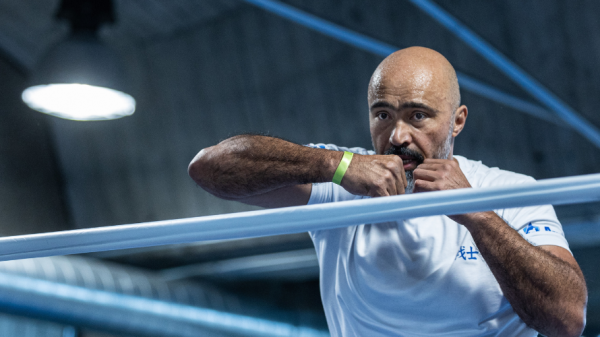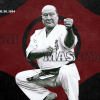While both Kyokushin Karate and Brazilian Jiu-Jitsu (BJJ) are effective martial arts that focus on discipline, technique, and physical fitness, they differ in their philosophies, training methods, and application in combat situations. Let’s break down the key differences between these two martial arts:
1. Focus and Style
Kyokushin Karate:
Kyokushin is a full-contact striking martial art that emphasizes powerful punches, kicks, knee strikes, and elbow strikes. It focuses on stand-up fighting, conditioning, and hard sparring, where practitioners train to absorb hits and continue fighting. Kyokushin also incorporates katas (pre-arranged forms) to help practitioners learn techniques and principles through repetitive practice.
Brazilian Jiu-Jitsu (BJJ):
BJJ is primarily a grappling martial art that emphasizes ground fighting and submission techniques. The core of BJJ revolves around taking an opponent to the ground, gaining a dominant position, and using techniques like chokes and joint locks to submit them. It focuses on leverage, technique, and timing, allowing a smaller practitioner to defeat a larger opponent using skill and positioning rather than brute force.
2. Training Methodology
Kyokushin Karate:
Kyokushin training includes kicking and striking drills, full-contact sparring, and conditioning exercises. Practitioners often engage in intense sparring (kumite) to build resilience, strength, and combat readiness. The training emphasizes standing combat, and practitioners condition their bodies to take and deliver hard hits.
Kyokushin also involves the practice of kata, which are pre-arranged sequences of movements that simulate fighting against multiple opponents, serving as a way to perfect techniques and movements.
Brazilian Jiu-Jitsu (BJJ):
In BJJ, training involves drilling techniques with a partner, practicing various submission holds, sweeps, and escapes, as well as “rolling” (live sparring) to practice in real-time against a resisting opponent. The focus is on ground control, and practitioners spend much of their time perfecting transitions between positions, submission techniques, and grappling with opponents. BJJ sparring (or rolling) is often more technical and less reliant on brute strength compared to Kyokushin.
3. Combat Range
Kyokushin Karate:
Kyokushin operates in the striking range—fights happen at a distance where kicks, punches, and strikes are exchanged. It is more suited for situations where the goal is to remain standing while delivering powerful blows to an opponent. Kyokushin fighters develop strong techniques and iron-like conditioning, as it is a full-contact martial art.
Brazilian Jiu-Jitsu (BJJ):
BJJ focuses on the grappling range—specifically on taking the fight to the ground. BJJ practitioners aim to close the distance between them and their opponent, take them down, and control them on the ground. The ultimate goal is to achieve a dominant position and force the opponent into submission through a choke or joint lock. BJJ’s strength lies in ground control and submissions rather than striking.
4. Self-Defense Application
Kyokushin Karate:
In self-defense situations, Kyokushin practitioners rely on their striking power and ability to defend against attacks while standing. It is useful in situations where one needs to create distance between themselves and an aggressor and incapacitate them quickly with strikes. However, Kyokushin does not focus heavily on grappling or ground techniques, which could be a disadvantage if the fight goes to the ground.
Brazilian Jiu-Jitsu (BJJ):
BJJ excels in situations where a confrontation goes to the ground. BJJ practitioners are taught how to defend themselves on their back, neutralize an opponent’s strikes from a ground position, and submit them using leverage and technique. It is highly effective for controlling opponents in close quarters and in situations where strikes may not be effective, such as in a grappling situation.
5. Philosophy
Kyokushin Karate:
Kyokushin emphasizes the spirit of perseverance, discipline, and mental toughness. It is known for its “never give up” mindset, and practitioners are encouraged to push beyond their physical limits. Kyokushin incorporates a strong philosophical and spiritual component, with a focus on self-improvement and respect for others. Practitioners follow the “Osu” spirit, which embodies determination and humility.
Brazilian Jiu-Jitsu (BJJ):
BJJ’s philosophy is more centered around technique, efficiency, and leverage. It teaches that strength is not as important as skill, and a smaller person can overcome a larger opponent through superior technique. BJJ practitioners learn to stay calm in difficult situations, focus on positioning, and use their opponent’s energy against them. There is a strong emphasis on continuous learning and adaptability in BJJ.
6. Competitions
Kyokushin Karate:
Kyokushin competitions are typically full-contact karate matches where strikes are allowed to the body and legs, but no punches to the head. Fighters are known for their toughness and resilience, and matches are often a test of endurance and strength.
Brazilian Jiu-Jitsu (BJJ):
BJJ competitions involve grappling and ground fighting, with the aim being to submit your opponent. Points are awarded for achieving dominant positions (such as mount or back control), and the goal is to force the opponent to tap out using submission techniques like joint locks or chokes.
Both Kyokushin Karate and Brazilian Jiu-Jitsu offer unique and valuable skills for martial artists, but they approach combat from entirely different perspectives. Kyokushin focuses on full-contact striking and builds incredible toughness and endurance, while BJJ is about grappling, control, and submitting opponents on the ground. Whether you are interested in powerful strikes or learning how to defend yourself in grappling situations, each art provides distinct benefits and can complement each other when practiced together.




































